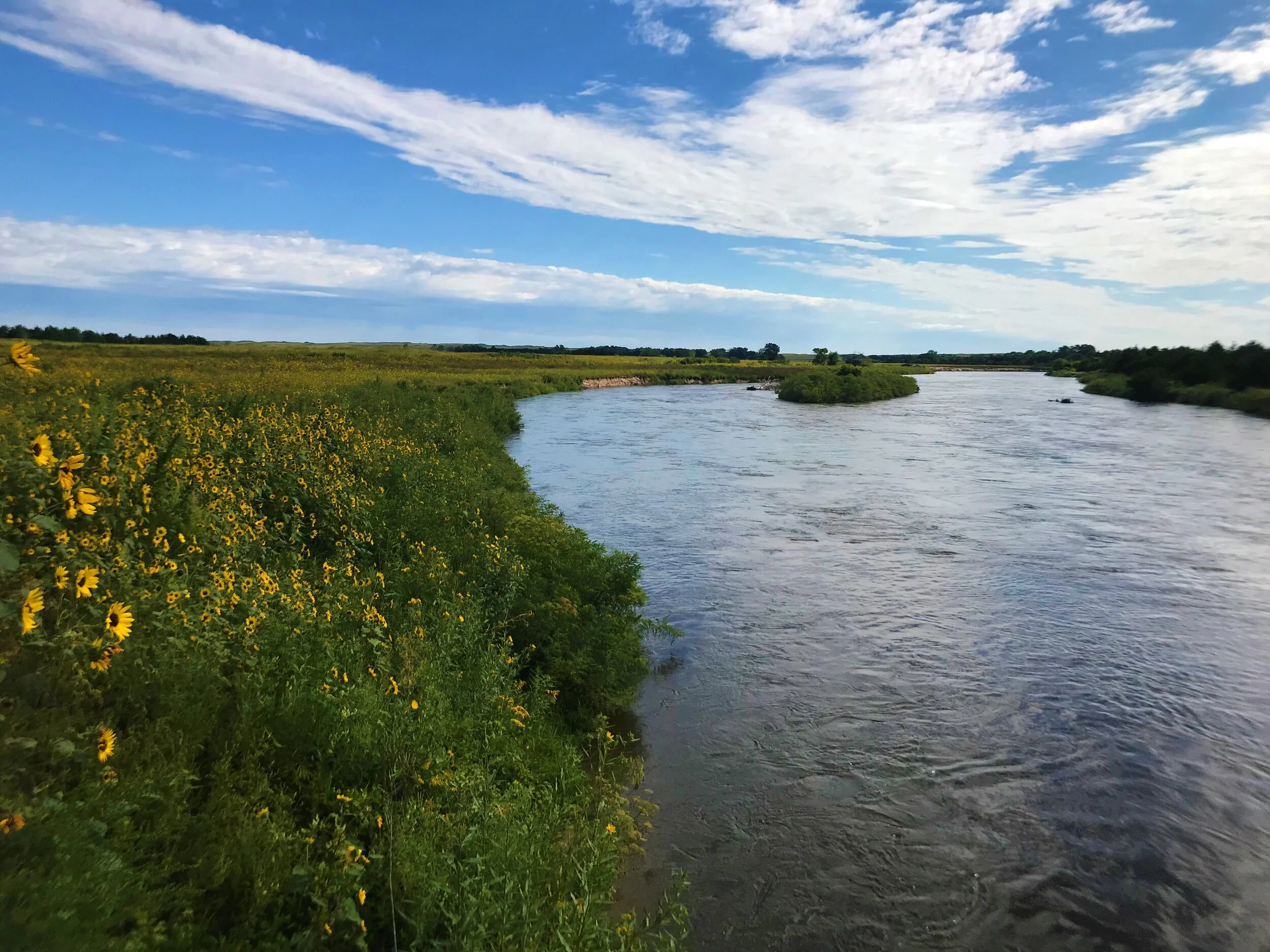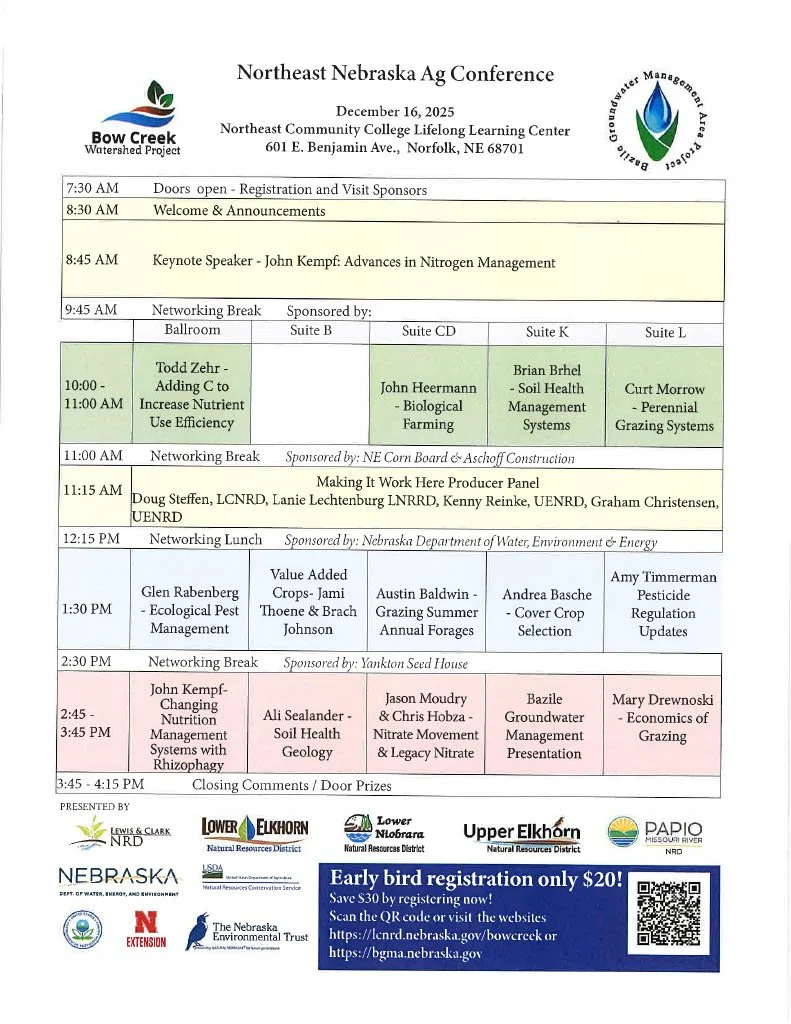NRD News
〰️
Spotlight Programs
〰️
About the Upper Loup
〰️
Our Services
〰️
NRD News 〰️ Spotlight Programs 〰️ About the Upper Loup 〰️ Our Services 〰️
Upper Loup NRD Directors Approve Expansion of Acres for 2026
With no significant changes in groundwater levels across the NRD, the Directors voted to allow up to 2,500 new acres to be developed throughout the District for 2026. Each of the five sub-districts has been allotted 500 acres. Interested landowners must apply for any new irrigated acres on an Expansion of Irrigated Acres Application form which can be found on the ULNRD website. The application period is now through September 30, 2025. Along with the application form, the landowner needs to submit an aerial photo depicting the new acres as well as a one-time non-refundable administrative fee of $100.00 per application of 25 acres or less, or $500.00 for applications over 25 acres. A minimum score of 15 points on the Upper Loup NRD Irrigated Acre Ranking Sheet is required for an application to be considered for approval. Each application will be ranked according to the following criteria: density of irrigated acres within the vicinity, NRCS soil classification, stream depletion factor, needing to drill a new well, groundwater quality, slope, removal of trees and any other criteria deemed relevant by the NRD District. Acres approved for expansion must be certified with the Upper Loup NRD as well as have a flowmeter installed.
2025 Adventure Camp About The Environment was a great success! ACE campers from across Nebraska made friends, gained confidence, had a lot of fun, and learned about our natural resources.
“While natural disasters capture headlines and national attention short-term, the work of recovery and rebuilding is long-term.”
Monitoring Program for Domestic Wells
Uppper Loup NRD implemented a domestic well water quality monitoring program in 2008. All registered domestic wells or non-registered demestic well (upon request) are tested on a five year rotation. Each well is tested for Nitrate-nitrogen content and can also be tested for bacteria upon request. Sub-District 4, which includes all of Blaine County, the southern portion of Brown County and Thomas County east of highway 83, was tested this past summer. There were 130 wells testet with nitrate results ranging from 0-2.9 mg/L, with the average of 1.33 mg/L. The results were well below the maximum contaminant level of 10 mg/L. In Nebraska about 95 percent of rural residents get their household water supply from privat or domestic wells. If these wells are not properly protected, they are at risk of being contaminated. Potential contaminate sources include septic tanks, animal waste, pesticides, ferilizers, and/or fuel. Potential for contamination in our area is high due to the sandy soil. The only way to know if you have nitrates or bacteria present is through testing, because both contaminates are odorless, colorless and tasteless. The Upper Loup NRD reccomends testing on all domestic wells every 5 years. We are scheduled to test sub-district 5, which includes all of Logan County and eastern third of McPherson County, this summer.
Importance of Flowmeters and Keeping Them Properly Maintained
Flow meters play a very important role, as they provide accurate data on water usage, allowing the Natural Resource Districts to effectively manage groundwater resources. The data collected helps the producers to identify potential water waste, monitor the efficiency of the irrigation wells and apply proper amounts of water based on crops planted. To make wise decisions, based on the data collected each year, it is important to keep the flow meters in proper working order. The data collected helps in providing a “history” of needed water use for current irrigators and is used in statewide hydrologic models. This data helps us protect the irrigation acres already certified.
Landowners and operators are responsible for ensuring that flowmeters are fully functional and properly maintained. Please contact Matt, at 308-645-2250, if you have any questions about maintaining your flow meters. We also noticed a lot of the meters are missing the rubber boot cover this year and we have some in stock. We are offering them to you at no charge (a $50 value) to help protect your flow meters. The covers can be picked up here at the office.
Chemigation and Permit Training
Chemigation is the practice of applying agrichemicals through an irrigation distribution system. Each year several irrigators across the Upper Loup NRD district use chemigation to apply fertilizers and pesticides to their fields. All chemigation systems must be fitted with the proper safety valves and equipment to prevent potential risks to our natural resources and public safety. The equipment must be inspected by the Upper Loup NRD prior to use to assure functionality and compliance. State law also requires the producer to obtain a chemigation permit from their local NRD on an annual basis. Permit fees are due on June 1st, before 4p.m. Permit fees are: Renewal Permit is $30 and New Permit is $60. If you plan to apply chemicals, you must attend one of the courses and pass a written exam. Certification is good for four years. Training dates and locations for 2025 will be anounced at a later date. Please watch the newspaper or visit our website for any updates.
About
Find out more about our organization,
mission, the District, and our responsibilities.
need our services?
Our NRD offers a wide variety of services and products from water quality analysis and tree planning to field guide and Hefty bag sales.




